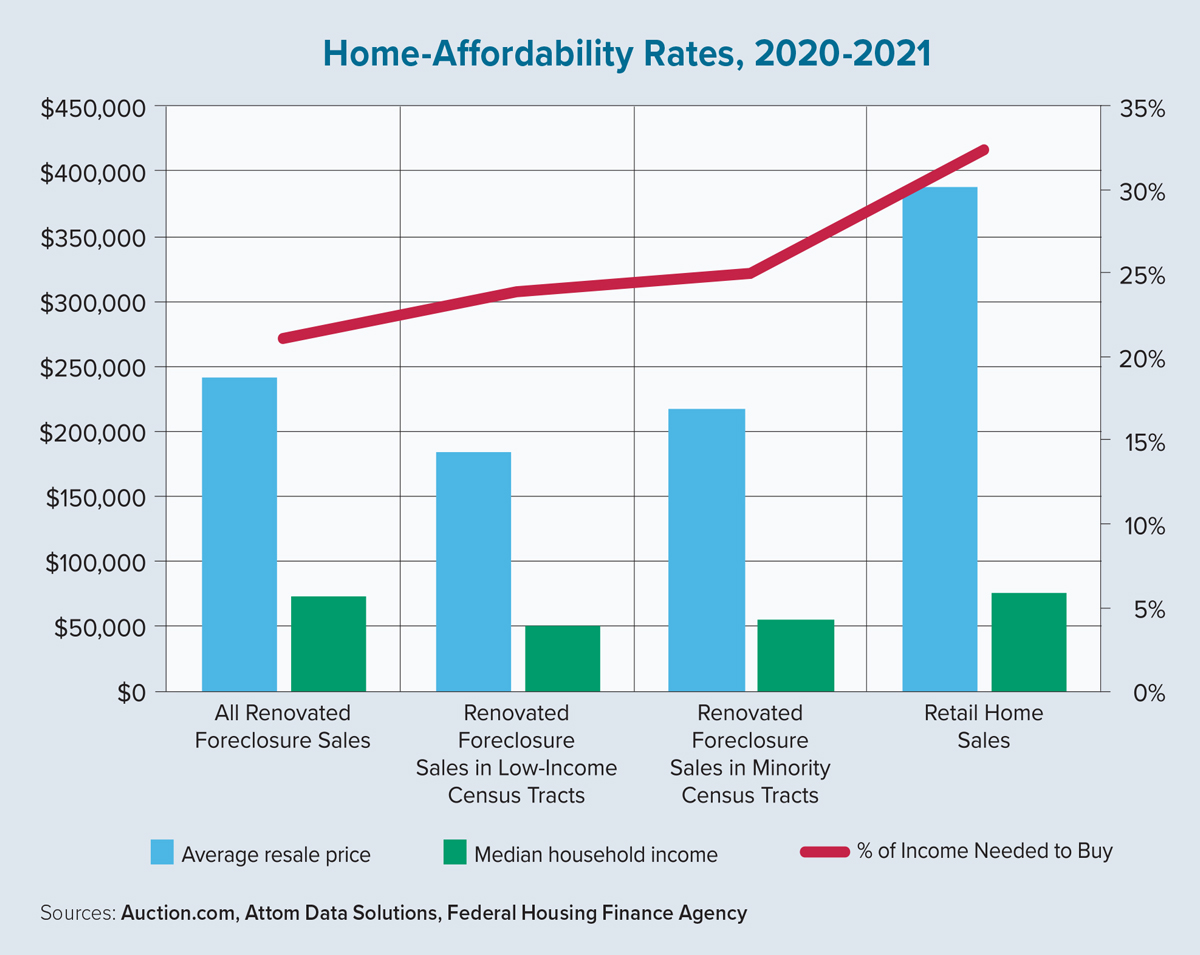Historically, how a mortgage servicer sold a property after a foreclosure — what’s called distressed disposition — was largely ignored when it came to developing a responsible and sustainable lending strategy. But this is changing as more data becomes available, shedding light on the various outcomes produced by different disposition methods.
Case in point is an Auction.com analysis of more than 6,000 distressed residential properties that were foreclosed upon and resold on the retail market during the four-quarter period ending in June 2022. This analysis provides key insights into the ultimate outcomes achieved by the three disposition methods available to mortgage servicers: foreclosure-auction sales; bank- or real estate-owned (REO) auction sales; and traditional REO sales typically conducted via the Multiple Listing Service.
Using public record data, the analysis considered financial outcomes for mortgage servicers — namely net proceeds and holding-time risk — along with community outcomes such as homeownership rates and the recovery of property values. The clear winner among disposition types is the foreclosure-auction sale to a third-party buyer, which consistently provides the most responsible outcomes for mortgage servicers and communities alike.
Foreclosure-auction sales produced estimated net proceeds that were, on average, 14% above the seller’s credit bid. The credit bid is typically either the estimated net value of the home or the total debt owed to the foreclosing lender, whichever is lower. By comparison, average net proceeds were 4% below the estimated net present value for properties sold through REO auctions and 12% below that of properties sold via traditional REO transactions.
When it comes to community outcomes, foreclosure-auction sales result in the highest homeownership rates and best recovery of property value. Among foreclosure-auction sales into the retail market, 69% were sold to owner-occupants, compared to an owner-occupancy rate of less than 43% for both types of REO sales. Properties purchased via foreclosure auction were later resold for an average of 97% of the 2022 estimated after-repair value, compared to 76% for REO-auction sales and 69% for traditional REO sales.
The fact that foreclosure-auction homes are resold for nearly the full after-repair value raises the concern that these activities are contributing to gentrification — that the value added through renovation makes these homes unaffordable to local families. New data may alleviate this concern.
Among more than 10,000 properties resold on the retail market in 2020 and 2021 after being purchased on the Auction.com platform, the average resale price was $243,258. That was 38% below the average sales price of $389,534 for all retail home sales during the same period, according to Attom Data Solutions. Importantly, the monthly house payment for renovated foreclosures — including property taxes and insurance — represented only 21.1% of the median household income in the surrounding census tract.
In an ideal world, foreclosure-auction sales would represent 100% of dispositions, given the better outcomes they produce. In the real world, however, not all homes sell at foreclosure auction, largely due to the one-and-done nature of this type of event.
Based on input from Auction.com users, an optimal real-world disposition mix at the portfolio level would consist of 50% foreclosure-auction sales, 25% REO-auction sales and 25% traditional REO sales. When applied to the cohort of 6,000 properties foreclosed upon during the four quarters ending this past June, this portfolio disposition mix would result in average net proceeds of 12% more than the typical REO execution and an average holding time of 78 days.
This mix would ultimately result in a homeownership rate of 56% for properties resold via the retail market. On average, homes would be returned to retail buyers 185 days after a foreclosure, nearly one month faster than with traditional REO sales. ●
-
Daren Blomquist is vice president of market economics at Auction.com. In this role, Blomquist analyzes and forecasts complex macroeconomic and microeconomic data trends to provide value to both buyers and sellers using the platform. Blomquist has been cited by thousands of media outlets nationwide, including major news networks, The Wall Street Journal, The New York Times and USA Today. Prior to Auction.com, Blomquist worked at Attom Data Solutions.
View all posts






